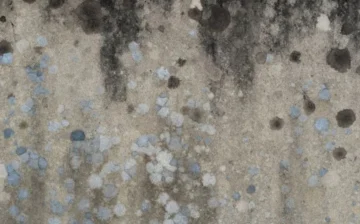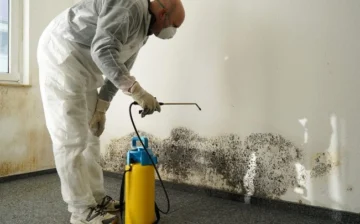
A particular kind of fungus called mould can flourish on warm, moist surfaces. If it blows into homes and spreads disease, it can damage property and health. Homeowners must locate the mould’s growth point, take action to stop it from spreading, and clean up the mess in order to remove it. The cost of mould removal in Newcastle can vary depending on the size of the affected area and the type of mould.
What Is Mould Removal?
Mould Removal is the process of removing mould from a surface or object. Mould infestation can be on any type of surface, such as furniture, walls, ceilings, and even inside objects like appliances and phones. Mould Removal is not just a simple task; it requires the skill and precision of an experienced mould removal technician. Effective mould Removal often requires specialist equipment and training in order to properly identify and remove the mould. People who live and work in contaminated areas run serious health risks if this is not done.
Mould remediation is a highly specialized field with strict regulations governing its practice. Anyone attempting to remove visible mould without the proper knowledge and expertise could inadvertently create further problems for themselves and those around them. Please seek accurate and trustworthy advice from a professional mould remediation service provider if you are concerned about the presence of mould.
Prevention Methods For Mould
Mould growth is a problem that can occur in any home, regardless of the age or construction of the residence. The most common sources of mould growth are moisture and pests. Here are some prevention methods to keep your home mould-free:
- Regularly dry out your home’s damp areas, including under eaves, inside showers and around water fixtures. This will prevent water from collecting and promote mould growth.
- Eliminate or control pests by using effective pest control technology. Insects feed on mould, so eliminating them will help to reduce mould growth.
- Keep your windows and doors sealed and clean to prevent the entry of pests and moisture into your home. Verify that there are no gaps or cracks that could let moisture or air in.
- Insulate your attic and walls if they are not sealed properly to reduce airborne mouldspores levels in your home.
Mould Removal Processes
Mould is a fungus that can develop on a variety of surfaces both inside and outside. It’s critical to get rid of mould as soon as possible because it can have serious negative effects on your health. The best mould removal method for you will depend on the type of mould you have, the surface it is growing on, and your personal preferences. There are many different mould removal techniques available.
- Bleach and water – This involves mixing bleach and water together in a ratio of 1:10 and then using this mixture to scrub the mouldy surface. This method works well to eliminate mould, but it can also damage some surfaces, so it’s important to test it out first on a small patch of your surface.
- Dry ice blasting – This involves using a machine to blast dry ice onto the mouldy surface. The dry ice will cause the mould to break down and fall off the surface. This process is effective for removing mould from hard-to-reach places, but it can be expensive.
If you have a small amount of mould, you may be able to remove it with a vacuum cleaner. To stop the mould from spreading, just make sure to empty the vacuum cleaner bag after each use.
You might need to use a professional mould cleaning service if you have a lot of moulds. These businesses will remove the mould from your home using specialised tools. This process can be expensive, but it is the best way to ensure that all of the moulds are removed from your home.
Common Areas Of The Home Where Mold Grows
Mould issue is common in homes, often caused by improper wiring or plumbing. The following are some typical places for mould to grow:
- Bathrooms – Mould can form on surfaces near the drains and water pipes and in the walls, ceilings mould and flooring.
- Kitchens – Molds thrive in wet environments, such as leaky faucets and wet countertops. They can also form on spoiled food or ingredients left on kitchen surfaces.
- Laundry Rooms and Attic Spaces – Mold grows fastest in close quarters with pollutants and moisture sources. These regions’ high relative humidity levels are ideal for the growth of mould.
It’s critical to act right away if you suspect that your home may have a mould problem. Asthma, allergic reactions and respiratory infections are just a few of the serious health issues that mould can bring on. It might even be toxic in some situations.
How To Prevent Mold Growth In Your Home
Mould can cause a whole host of problems in your home, from respiratory issues to structural damage. While it’s not always easy to prevent mould from growing, there are a few steps you can take to help minimize your risk.
-
Keep Your Home Clean and Ventilated
Keep your home clean and well-ventilated as this is one of the best ways to stop the growth of mould. If your air is cluttered with dust, pollen, and other pollutants, it becomes difficult for mould spores to grow. Cleaning and cleaning products can also help expel unwanted moisture, which can encourage mould growth.
-
Check for Water Damage
Water damage can be one of the easiest ways for mould to take hold in your home. Get rid of any standing water right away and call a professional if you notice any wet spots or areas of the floor that appear to have been unusually affected by water. Wet carpets and insulation can also lead to Mould Growth – make sure to dry these areas thoroughly after any rain!
-
Use Proper Cleaning Materials
Cleaning products can be effective at removing dirt, dust, and other particles, but they may also promote mould growth if they’re used incorrectly. When using your cleaning products, be sure to read the label’s directions and ingredients list. Some cleaning products may require diluting with water before use, while others should be used full-strength.
The Importance of Removing Mould
Mould removal is important for improving air quality and reducing the risk of exposure to airborne mould spores. Visual mould, black mould and ceiling mould can all be removed by a mould removal specialist.
Firstly, it can improve air quality by reducing the number of airborne mould spores. Secondly, it can reduce the risk of exposure to mould spores, which can cause a number of health problems. Finally, it can also improve the appearance of your home or office.
Contact a mould removal expert if you have any worries about mould in your house or place of business. They’ll be able to evaluate the circumstance and give you advice on how to proceed. Visit health.nsw.gov.au to learn more.
How do I permanently get rid of mould in my house?
The best way to permanently remove mould from your home will depend on the type and degree of mould contamination, so there is no universal solution to this problem. However, a number of common methods used to remove mould from buildings or homes can be applied similarly to removing mould from a room or area:
- Use a HEPA-filtered vacuum cleaner: Mold spores are susceptible to being removed using a vacuum cleaner with a HEPA filter, as the machine’s strong air pressure and powerful brooms will dislodge any mould that has taken hold. It is important to always use caution when cleaning areas with high levels of moisture, however, as not all moulds are able to survive exposure to excessive amounts of bathroom cleaner fumes.
- Use an aggressive bleach solution: A diluted bleach solution (1 part water to 3 parts bleach) can be used to effectively kill off any mould that has grown on surfaces within the room where it was leaked or spilt. Be clear on not to use too much chlorine though – overuse can irritate the skin, and straws can become combustible if they come into contact with chlorinated water while still wet!
- Seal affected areas: If you have removed all the mould you can see and cleaned the area thoroughly, you will need to take measures to prevent mould from returning. This can be done by sealing any cracks or holes in the walls where water might enter, as well as painting or varnishing over any porous surfaces where mould might take hold. It helps if you also considered using a dehumidifier in the room to keep the air dry and discourage mould airborne spores from taking hold.
What kills mould permanently?
The only way to permanently kill mould is to prevent it from growing in the first place. This means properly sealing any leaks and cleanliness.
Can mould be successfully removed from a house?
Mould is a fungus that thrives in moist, dark areas. It can be removed from a house with the help of a professional mould removal contractor, but it is usually not totally successful. Mould can release poisonous spores when it grows and these spores can spread throughout the house if not cleaned up properly.
How does Mould removal work?
Mould removal works by using a hot air machine to heat up the mould and make it expand. This makes it possible to break off the mould piece by piece until all that is left is the melted plastic.
What is mould treatment?
Mould treatment is a process of fighting mould growth by using chemicals or heat.
What is the best way to remove mould?
The most effective way to remove mould is to use a mould cleaner.
We hope you found this blog post on A Comprehensive Guide On How to Remove Mould From a House, useful. Be sure to check out our post on The Best Tips for Moving to a New House 2022 for more great tips!
Have Experience in the Moving Industry? Want an Additional Income Stream? Work With All Around Moving!
Our unique Work With Us program gives the opportunity to experienced moving consultants to run their own Moving Consultant business from anywhere in the United States. Click here to learn more.





